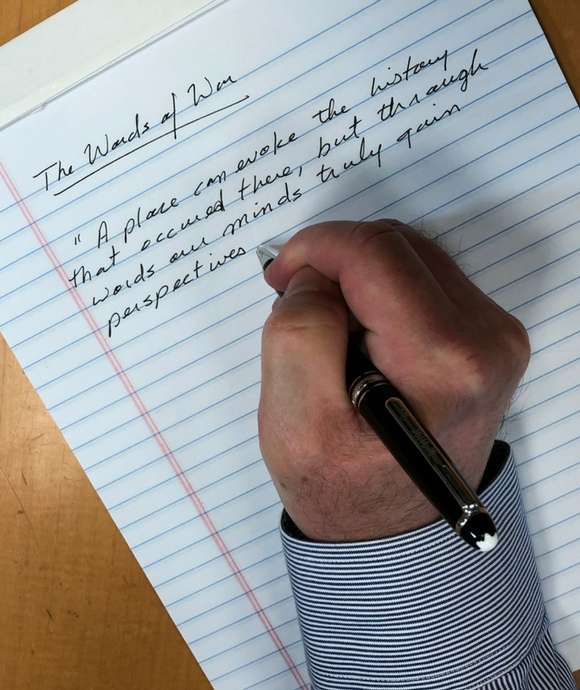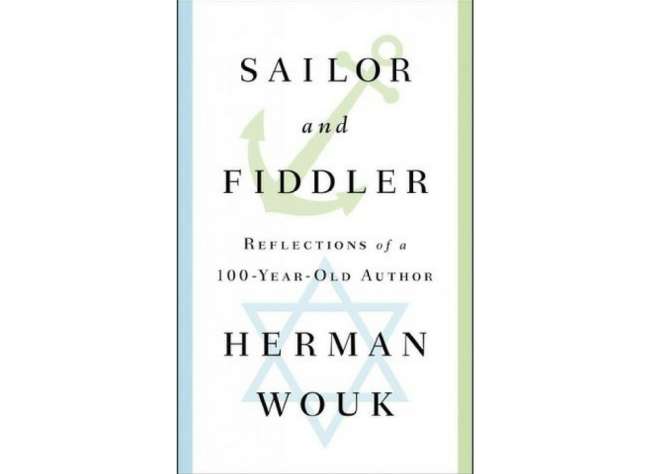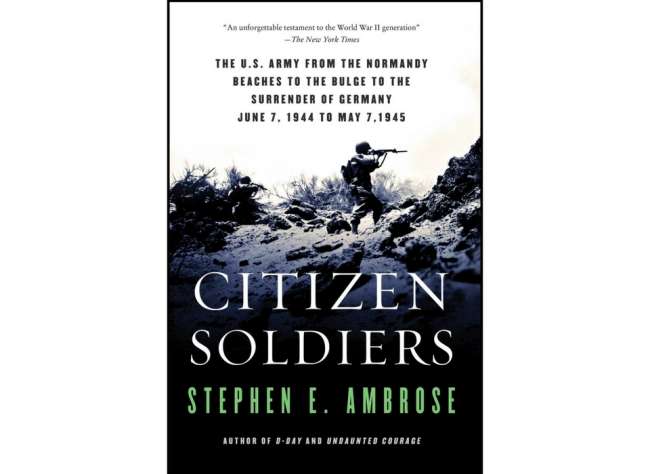“The destroyer continued her turn, completing three-quarters of a circle, and then headed down the still-visible fan that had been left by our torpedo wakes. Their apex marked our firing position, and the enemy would know that a submarine could not have traveled far.
“‘That’s all right,’ said the captain. ‘Keep your scope up and we’ll shoot that SOB down the throat.’ . . .
“The range on firing had been 750, which was the best, especially since the time for our first torpedo to hit had now gone by. The props of our last torpedo had been blanked out by those of the destroyer, which were now roaring through our hull. There was no other noise, only her screws now menacingly close. We were passing 80 feet, and men commenced bracing themselves for the coming depth charges; though still confident, I chose the spot between the scope and the TDC.
“The first depth charge was severe, but only to our nerves, and we braced ourselves in earnest for the pattern that would follow. A mighty roar and cracking, as if we were in the very middle of a lightning storm, shook Wahoo. The great cracking became crackling, and every old salt aboard knew the sound—that of steam heating a bucket of water, but here amplified a million times. The destroyer’s boilers were belching steam into the sea.
“‘We hit the son of a bitch!’ rang out in unison from the whole fire control party, and doubtless throughout the boat. Never could apprehension and despair have changed to elation more abruptly.”
– Rear Admiral Richard O’Kane, Wahoo: The Patrols of America's Most Famous World War II Submarine, pages 138–139
What is memorable about the two excerpts above is the sheer sense of courage, daring, adversity, and ultimate triumph conveyed during a raid in Wewak Harbor in Victoria Bay, on the island of Wewak north of New Guinea on January 24, 1943. The down-the-throat torpedo shot performed by Captain Dudley “Mush” Morton and his crew aboard the Wahoo announced the beginning of a new, aggressive style of submarine warfare.
American submarine forces were plagued by many problems after Pearl Harbor. Perhaps the best-known problem of the period was defective torpedoes, which consistently ran too deep in the water and missed targets. But there were other issues involving leadership and the human element of war. Rather than take risks, many skippers patrolled with a defensive mindset and did not venture out to engage the enemy. O’Kane himself later observed that it was a big ocean out there, and one did not have to find the enemy if one didn’t want to. Too many submarine patrols were putting out to sea and returning without any contact with the enemy, much less kills of merchant or naval vessels. This was especially troubling throughout 1942, as the carrier and submarine forces were the main military elements available to take the fight to the Japanese in the Pacific.
As noted in my previous post, Morton and O’Kane pioneered new submarine attack techniques through Morton’s leadership and willingness to share responsibilities with his Executive Officer during combat operations. But this was only part of Morton’s aggressive new leadership style. He would actively seek out the enemy off their bases and in their home waters, far from the safety of Pearl Harbor and at tremendous risk.
This is what makes the passages above special. Against expectations, Wahoo penetrated a Japanese naval base located in a shallow harbor, seeking to surprise the enemy. Spotting the Japanese destroyer Harusame getting underway, Wahoo fired three torpedoes at the ship, and all missed aft (behind the moving ship). The destroyer turned directly toward the submarine’s position (indicated by the torpedo wakes), aiming to drop depth charges and leaving a much less exposed area for further attack. A head-on shot directly at the bow of an oncoming ship that was rapidly closing range was a dire predicament to be in.
The last element of Morton’s courageous leadership shines at this point, as he and O’Kane calmly execute the down-the-throat torpedo shot. In the face of their own demise, instead they land the fatal blow (the Harusame attempted to turn away from the oncoming torpedo, and was struck amidships, essentially breaking the ship in half).
The Wahoo became the most successful submarine in the US fleet, credited with sinking 19 Japanese ships by fall 1943. Then in October, after penetrating the Sea of Japan a second time, Morton and Wahoo met their demise from an aerial bomb dropped by a Japanese plane. But Richard O’Kane had already left Wahoo before the final war patrol in order to take command of the USS Tang. O’Kane would take the lessons Morton had taught him and lead Tang to wreak havoc on the Japanese at an even more furious pace. But the captain and his new boat and crew also had a wartime rendezvous with destiny, and that event will be the subject of the next two posts.
Notes: This is the fourth post in a series exploring books about submarine warfare during World War II. Read Part One. Part Two. Part Three. Part Five. Part Six. Part Seven. In a parallel series of History Through the Viewfinder posts, Dr. Huxen is revisiting the making of the interactive exhibit Final Mission: USS Tang Submarine Experience. Read Part One of that series. Part Two. Part Three. Part Four. Part Five. Part Six. Part Seven.

“A place can evoke the history that occurred there, but through words our minds truly gain perspectives and understanding of what it was like to know, feel, experience, hope, fail, triumph, and live through events from which we ourselves were absent. The written word is our most intricate map to retrace and reconstruct what we think happened, and ultimately brings us back to ourselves.”
– Keith Huxen, PhD, Senior Director of Research and History, The National WWII Museum
Keith Huxen
Keith is the former Senior Director of Research and History in the Institute for the Study of War and Democracy at The National WWII Museum.
Cite this article:
MLA Citation:
APA Citation:
Chicago Style Citation:










![Max Fuchs, New York City cantor, sings as Rabbi Sydney [sic] Lefkowitz, Richmond, VA, conducts the first Jewish services from Germany.](/sites/default/files/styles/max_650x650/public/2025-10/image1.jpg)

